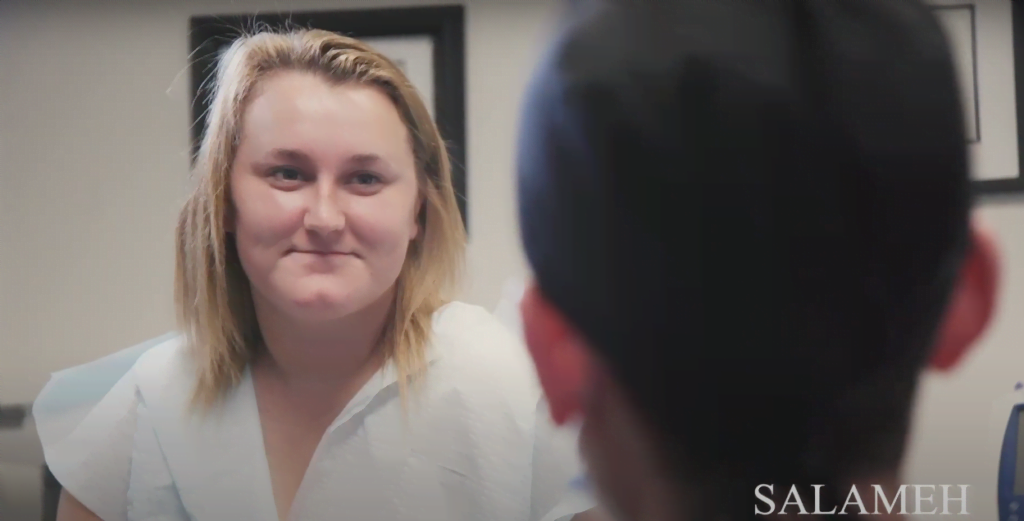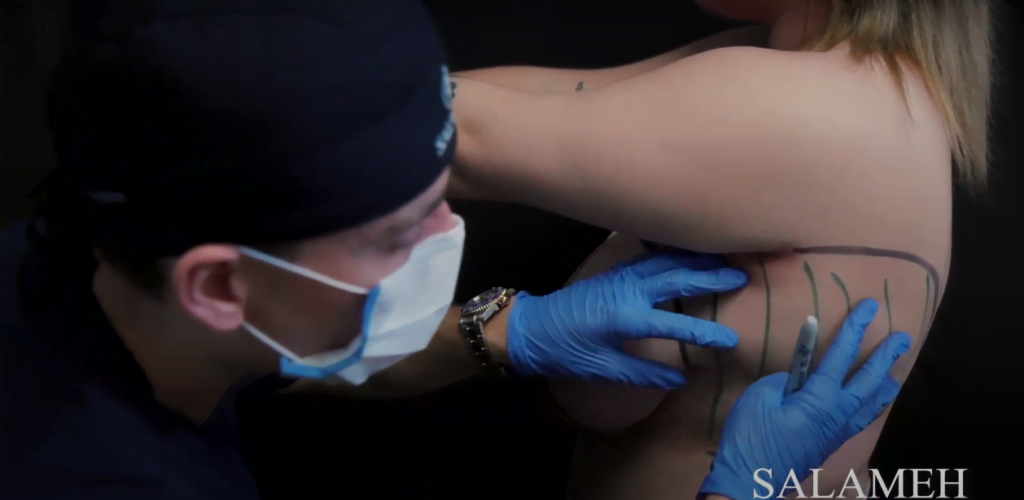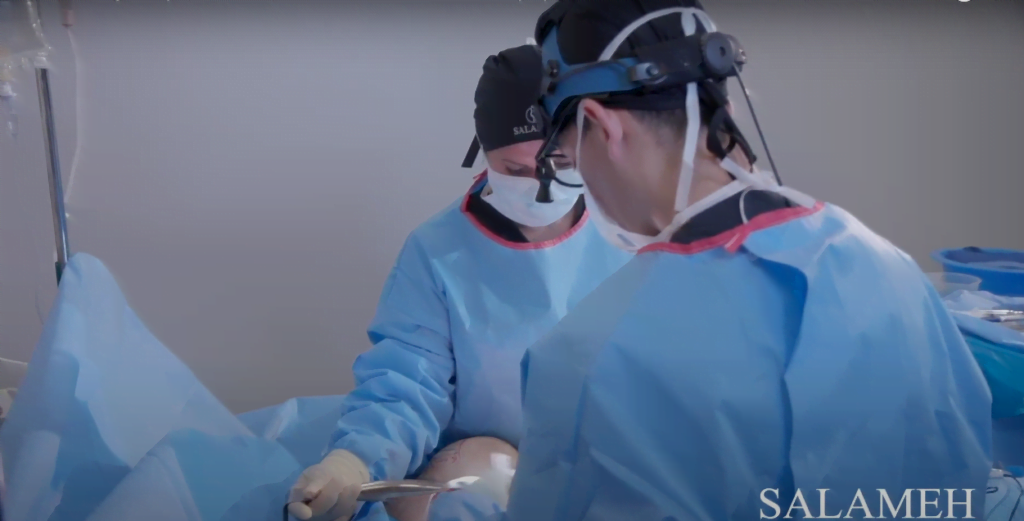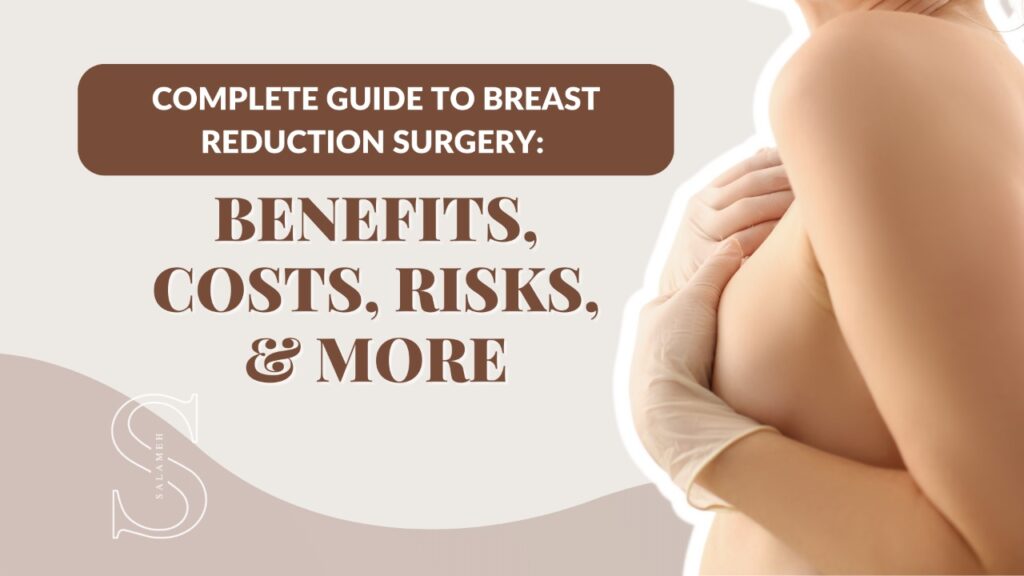Breast reduction surgery, clinically referred to as reduction mammoplasty, is a procedure that involves removing excess fat, tissue, and skin from the breasts.
The surgery is typically performed on women with larger breasts causing them physical discomfort – medically known as macromastia, due to their size and weight.
According to the American Society of Plastic Surgeons (ASPS), breast reduction surgery was the fifth most popular surgical cosmetic procedure in the United States in 2020, with 129,753 total procedures performed. This represents a 4% increase from the previous year (2019).
The ASPS further reports that the average age of patients undergoing breast reduction surgery in the United States is 35 years old, and most patients are women.
If you are considering breast reduction surgery to improve your way of life, it is vital to be well-informed about the procedure and what to expect during recovery.
In this blog, we will discuss topics about the best candidates for breast reduction surgery, the preparation process, the cost, the surgery itself, recovery, and the expected results. We will also cover the benefits and risks of the surgery and provide tips for managing the recovery process.
Primary Motivating Factors of Undergoing Breast Reduction Surgery

Breast reduction surgery can provide physical and emotional benefits for patients who are unhappy with their breasts’ size or shape. Here are some of the primary benefits of undergoing the procedure:
Physical Benefits of Breast Reduction Surgery
- Relief from physical discomfort: Large breasts can cause various physical distress, including back pain, neck pain, shoulder pain, and even bra strap irritation.
- Breast size reduction can help to alleviate these discomforts by reducing the weight of the breasts.
- Improved physical appearance: Breast reduction procedures can improve the appearance of the breasts by reducing their size and reshaping them to be more balanced and proportionate to the rest of the body.
- Improved posture: Large breasts can cause a forward posture and strain on the back muscles, leading to poor posture.
- Reduction mammoplasty can improve posture by reducing the weight of the breasts to allow back muscles to function more efficiently.
- Increased physical activity: Large breasts can make it challenging to engage in physical activities, such as running or participating in sports. The procedure can improve physical activity by making it easier to move and exercise comfortably.
Emotional Benefits of Breast Reduction Surgery
- Improved self-image: Large breasts can cause self-consciousness, affecting a patient’s self-image and self-esteem. The surgery helps achieve balance and proportion, giving the body a more aesthetic appearance.
- Increased confidence: Large breasts can cause social discomfort and embarrassment, leading to a lack of confidence.
Breast reduction surgery can improve confidence by allowing the patient more freedom to move around. This can significantly lead to increased participation in social and physical activities and a greater sense of well-being.
Factual Matters to Consider in Determining Whether the Individual is Fit to Undergo the Procedure

It is essential to remember that breast reduction surgery is a major procedure with potential risks and complications. That’s why it’s vital to discuss the benefits and risks of the surgery with a qualified healthcare professional before making a decision.
Several factors determine whether a patient is a good candidate for breast reduction surgery. During a pre-surgery consultation, a plastic surgeon will consider the following:
- Physical Health: A good candidate for breast reduction surgery should be healthy. This includes being at a stable weight and having no underlying health conditions that may increase the risk of complications.
- Mental health: A good candidate for breast reduction surgery should be in good mental health and have a positive outlook on the procedure. It is also essential to have realistic expectations about the results of the surgery.
- A good candidate for the procedure should have realistic expectations about the size and shape of their breasts after the surgery.
- Breast size: Breast reduction surgery is usually recommended for people with large & heavy breasts that cause physical discomfort or pain.
- Age: Breast reduction surgery is generally safe for people over 18. However, it is essential to note that the breasts continue to change and develop until about 22.
- Pregnancy plans: Breast reduction surgery can affect a person’s ability to breastfeed, especially during the healing period. It is essential to consider this if you are planning on having children soon.
- Breast Reduction Surgery Cost: The cost of breast reduction surgery in the United States can vary significantly depending on several factors, including the surgeon’s fees, the location of the practice, the complexity of the procedure, and the patient’s insurance coverage. On average, breast reduction surgery can cost anywhere from $5,000 to $10,000 or more.
Some clinics may offer financing options to help patients manage the cost of the procedure.
During the pre-surgery evaluation, the plastic surgeon will also assess the skin quality and elasticity of the breasts and the size and position of the nipples. The surgeon will also discuss the type of incision to be used and the surgery’s potential risks and complications.
Crucial Things to Prepare & Expect Before the Surgery
The pre-operative process for breast reduction surgery typically involves a series of consultations with a plastic surgeon and other medical professionals. This may include a physical examination, laboratory tests, and imaging tests such as mammography or ultrasound.
During this consultation, the surgeon will examine your breasts and may take photographs for your medical record. It would be best if you were prepared to discuss your medical history, including any previous surgeries or medical conditions and any medications or supplements you are currently taking.
You will be given information about the different techniques used for breast reduction surgery and the expected outcomes and potential complications.
You may also be required to stop taking certain medications or supplements that could increase your risk of bleeding during surgery.
In addition to these medical evaluations and consultations, you may need to make lifestyle changes to prepare for breast reduction surgery. This may include quitting smoking if you are a smoker, as smoking can increase your risk of complications during and after the procedure.
You may also need to arrange transportation to and from the surgery center and plan for someone to stay with you for the first 24 to 48 hours after the procedure.
It is essential to follow your surgeon’s instructions and to be open and honest about your medical history and any concerns you may have. This will help ensure your breast reduction surgery goes as smoothly as possible.
Overview of the Surgery Process & Technique

The technique used for breast reduction surgery will depend on the size and shape of your breasts, as well as your individual goals and preferences.
The most common techniques involve an incision around the areola (the dark skin surrounding the nipple) and down to the crease under the breast.
The surgeon will remove excess fat, tissue, and skin through these incisions and may also reposition the nipples and areolas. The remaining skin is then closed with sutures.
The procedure is typically performed under general anesthesia and would take several hours to complete.
After the surgery, you will be taken to a recovery room to be monitored until you are awake and alert. You may experience some pain and discomfort, which can be managed with pain medication prescribed by your surgeon.
Common Problems After Breast Reduction Surgery
Common problems after breast reduction surgery are usually manageable. Also, recovery time after breast reduction surgery varies depending on the individual and the complexity of the procedure.
You may need to take several days or up to a week off work to allow your body to heal.
You will also need to avoid strenuous activities and follow your surgeon’s instructions for caring for your incisions and supporting your breasts as they heal.
It is common to experience swelling, bruising, and tenderness in the breasts for the first few weeks after the procedure. You may also have difficulty moving your arms or lifting heavy objects. These side effects should gradually improve as you heal.
There are also potential risks and complications associated with breast reduction surgery, including bleeding, infection, and changes in sensation in the breasts and nipples.
Your surgeon will discuss these potential risks with you before the procedure and will provide instructions on minimizing complications. It is essential to follow your surgeon’s instructions and contact them if you have any concerns or questions during recovery.
Breast Reduction Surgery Recovery, Results & Aftercare
The results of breast reduction surgery are typically long-lasting. After the procedure, the breasts will become naturally smaller and more proportionate to the rest of the body and will also be more symmetrical and have a better shape.
Most people can return to normal activities within a few weeks of the surgery. You will likely need to wear a support bra for several weeks to help support the breasts as they heal and to minimize swelling.
It is also essential to follow your surgeon’s instructions for caring for your incisions, including keeping them clean and dry and avoiding soaking them in the bath or pool.
You may need to return to the surgeon’s office for follow-up visits to check your recovery progress and discuss any concerns you may have.
Takeaway

If you’re considering breast reduction surgery, you must speak with a qualified medical professional who can provide personalized advice based on your individual needs and goals. This will help you make an informed decision about whether the breast reduction procedure is right for you.
At Salameh Plastic Surgery, we take pride in our patient-centered care. The team is dedicated to providing personalized care in addressing each patient’s concerns and goals. We will dedicate ample time to listen to your needs to give you the best information and support in making informed decisions about your treatment.
Choosing Salameh Plastic Surgery Center for breast reduction surgery means that you will be in the hands of a skilled and experienced team that is committed to providing you with the best possible care and results. Plus, we also have a list of patient financing options to help you in meeting your needs. You can see our breast reduction before and after photos here: breast reduction before and after photos.
If you’re tired of the discomfort and frustration caused by large breasts, consider getting a breast reduction at Salameh Plastic Surgery. We will work with you to achieve the look and ease you desire. Take the first step towards a more comfortable and confident you by visiting Salameh Plastic Surgery Center to get a free consultation today.

